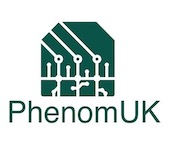Image-Based Plant Phenotyping
Plant phenotyping is a rapidly emerging research area concerned with quantitative measurement of the structural and functional properties of plants. It is motivated by concerns over global food security: food production must double by 2050 if it is to meet the needs of a rapidly growing population, and this must be achieved against a background of climate change and resource depletion. New, more productive varieties of food crops are needed that are robust to an increasingly harsh environment. Though plant breeding methods and the tools needed to study the genetic structure of plants are well-developed, techniques for characterising and assessing the structure and function of real plants are in their infancy.
Image-based phenotyping aims to develop the computer vision techniques and tools needed to recover quantitative data from a wide range of images of plants. Phenotyping presents challenging computer vision problems, plants are complex, deformable, growing objects found in highly variable, natural environments:
- Identifying plant components requires powerful object detection and image segmentation methods.
- Estimating growth requires motion analysis and tracking methods that can identify small changes in complex, flexible structures.
- 3D descriptions are particularly valuable, but their recovery from images is complicated by large-scale occlusions.
- Serious diseases often have only barely visible effects on the plant in their early stages, when they must be detected to maximise effective treatment.
- Roots’ natural environment is opaque, meaning non-standard imaging modalities must be investigated.
CVL has worked in image-based plant phenotyping for 10 years, producing a set of widely-used tools and methods and contributing most notably to the University's Hounsfield Facility, a unique root phenotyping installation based on X-ray computed tomography.
Current phenotyping projects span machine learning approaches to semantic image segmentation, 3D reconstruction and tracking of plant shoots, and the analysis of multi-spectral and X-ray computed tomography images. CVL members are also closely involved in two core scientific meetings in the area - the International Workshop on Image Analysis Methods in Plant Science (IAMPS) and the ICCV Computer Vision Problems in Plant Phenotyping (CVPPP) Workshop - and are partners in a range of international networking and large scale research infrastructure projects, including the International Plant Phenotyping Network (IPPN) Working Group on Imaging and Image Analysis.
More recently, UKRI has funded a new UK Plant Phenotyping Network via the Technology Touching Life programme. PhenomUK is lead by Profs Tony Pridmore (CVL) and Malcolm Hawkesford (Rothamsted Research). For more details, and to become a member, visit www.phenomuk.net.

Current Projects
Upcoming Events
There are no results that match your criteria.